Japanese Superfoods: Konjac
Low Calories, High Fiber
Konjac root has long been included in many Japanese weight loss diets for its near-zero calorie content and high fiber, so it’s no wonder that this unique food is making a name for itself around the world.
You can find foods made from the konjac yam in the cool section of the supermarket, usually near the tofu and natto. They come in a variety of forms, most notably in a block or as stringy white noodles known as shirataki (しらたき).
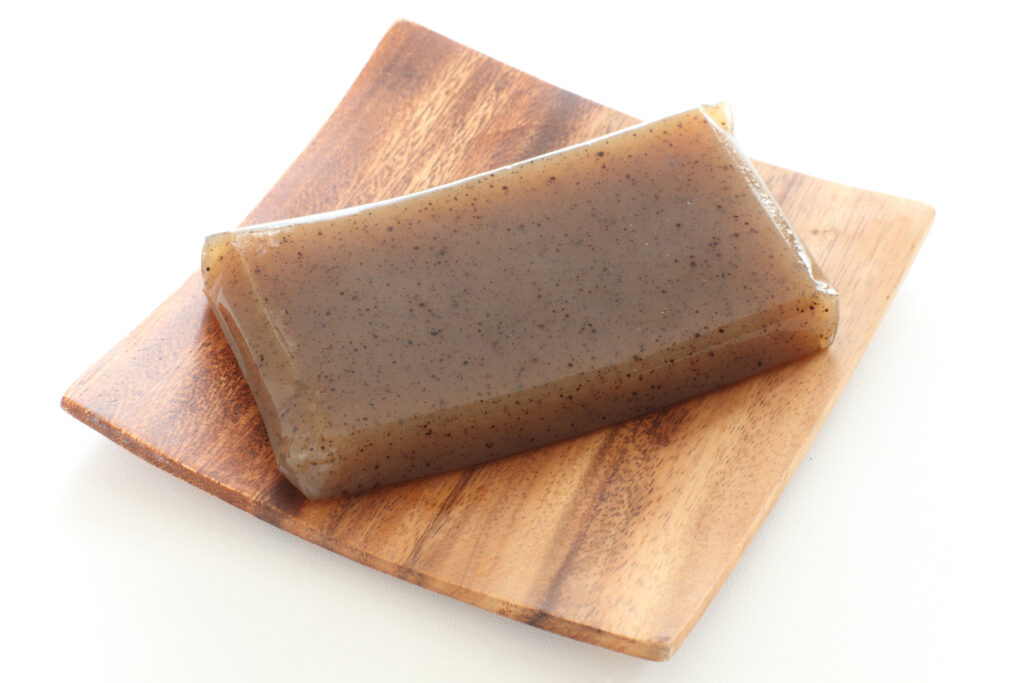 © Photo by iStock: jreika
© Photo by iStock: jreikaIt is believed that konjac was introduced into Japan somewhere in the sixth century as a medicinal food, but it is now a regular ingredient in Japanese home cooking, showing up often in dishes such as sukiyaki and oden.
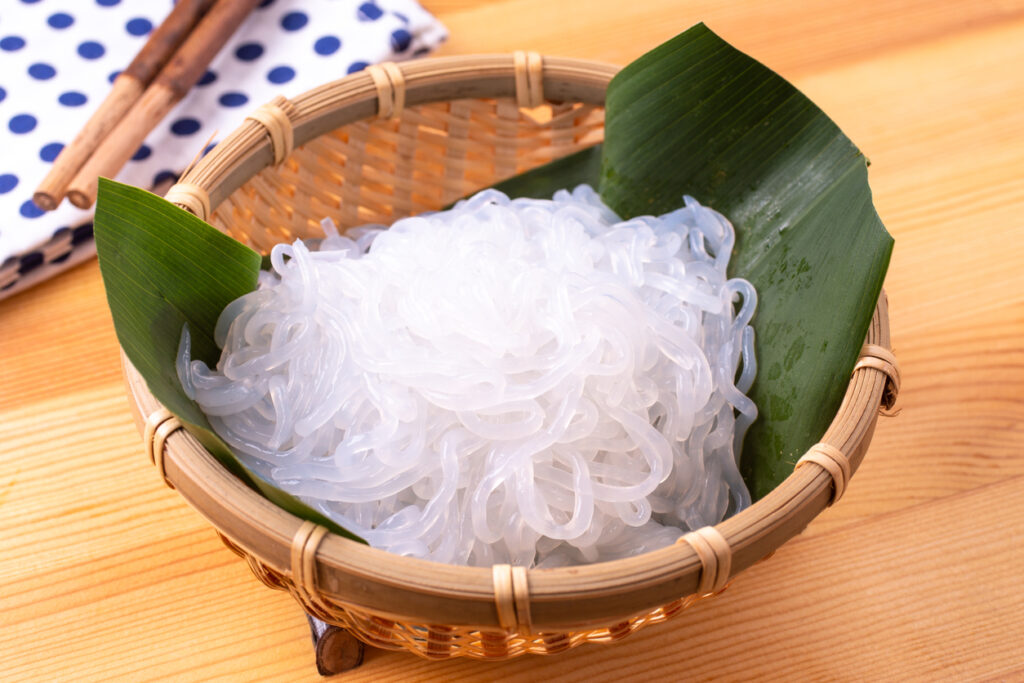 © Photo by iStock: Promo_Link
© Photo by iStock: Promo_LinkShirataki noodles are very low in calories (about five per 100 grams), low in carbohydrates, gluten free, vegan, dairy free and sugar free. They are comprised of up to 97 percent water and the remaining three percent is a water-soluble indigestible fiber called glucomannan. This glucomannan fiber has been made into supplement form and is the key to the health-providing property of this food—fiber. It is often known in Japan as a “broom for the stomach,” as it keeps the intestines clean and helps with bowel movements. Due to the fiber content and low carbohydrate levels, it can also help control blood sugar levels and lower cholesterol, so it is diabetic and heart-friendly. The noodles also expand in your stomach, giving a feeling of fullness which can be useful in aiding in weight loss.
I find it difficult to call this a superfood, as there is basically no nutritional content in it, therefore it’s important not to eat these on their own! However, it is a great food for those who wish to find a substitute for carbohydrate-heavy recipes or as an easy ingredient to add to dishes to gain the health benefits of fiber.
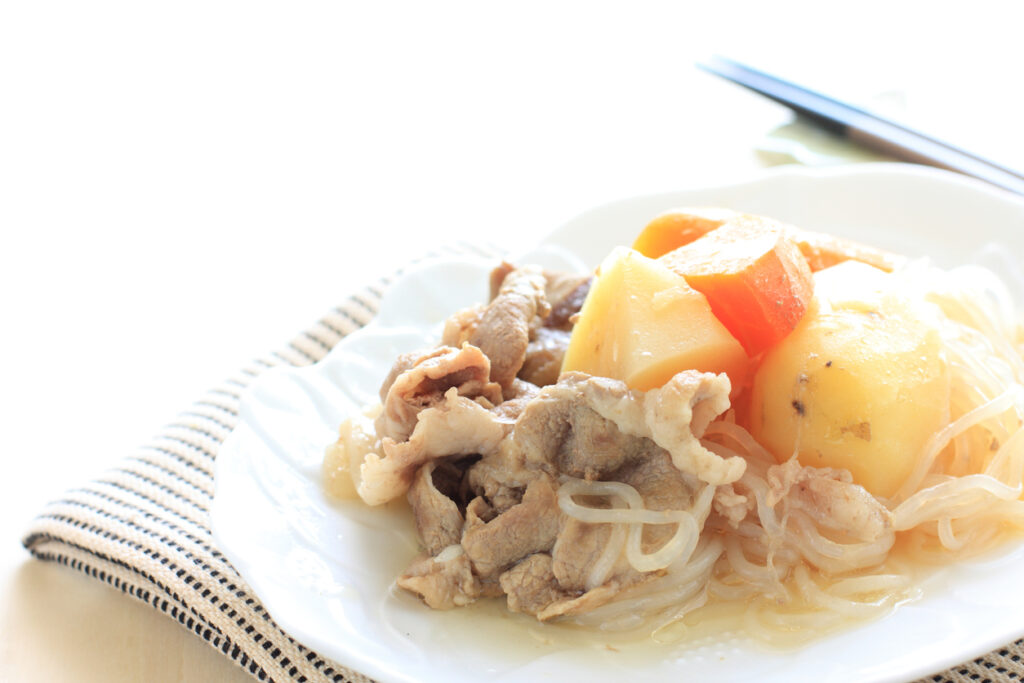 © Photo by iStock: jreika
© Photo by iStock: jreikaDue to the high water content, shirataki are almost completely tasteless and will soak up any flavors that you cook them with, making for a very versatile ingredient. You could substitute it in for any regular pasta or noodle dish such as a low carb ramen, spaghetti Bolognese or in my healthy pad thai recipe. Just make sure you don’t skip the preparation step for shirataki noodles, as the smell can be a little off-putting initially.
Pesto Shirataki Pasta
Serves 1
Gluten free/ dairy free / sugar free / vegan / paleo
What You Need
- 100-gram packet of shirataki noodles
- 1 cup broccoli florets, steamed or boiled
- 2 tablespoons vegan pesto (recipe below)
Vegan Pesto
- 1 cup fresh basil leaves
- 2 tablespoons lemon juice
- ¼ cup cashews or walnuts
- 2 tablespoons extra virgin olive oil
- 1 garlic clove, minced
- Salt and pepper to taste
What to Do
- Place all vegan pesto ingredients into a small food processor or blender and whiz until smooth.
- Rinse shirataki noodles in a strainer under cold running water until the smell disappears. This could take up to five minutes. Strain out as much water as possible and dry the remaining excess on paper towels. You may want to chop the shirataki noodles into smaller pieces at this stage to make them easier to work with.
- Place shirataki, two tablespoons of pesto and cooked broccoli into a bowl and toss until well combined. Serve sprinkled with dukkah for some extra crunch. Can be served warm or cold.
You can also be creative with this dish and add in some creamy avocado, sun-dried tomatoes, green onions or some chicken for some extra protein.
You will likely have a bit of pesto left over, so just store it covered in the fridge. It is delicious mixed with scrambled eggs or in a veggie wrap or sandwich.

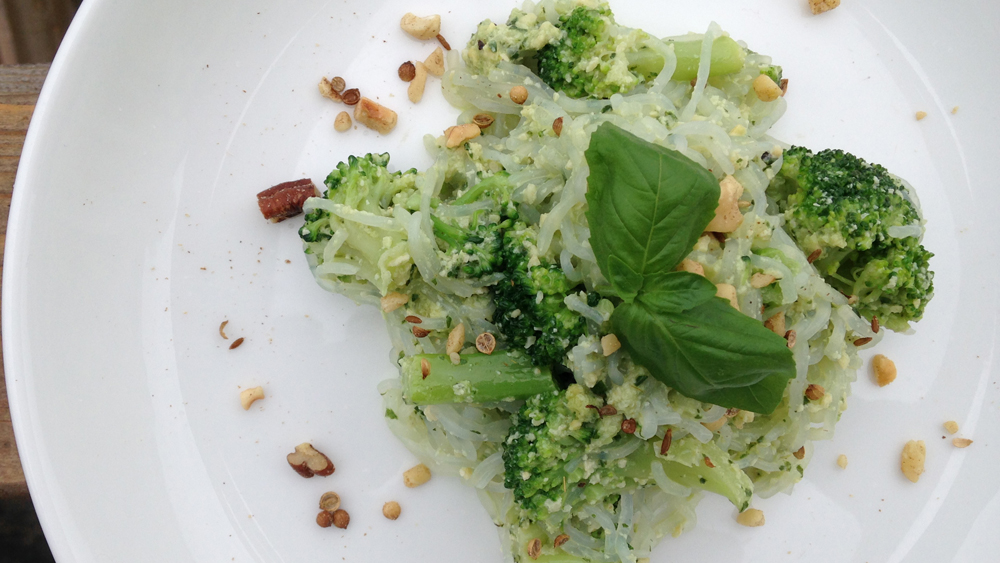












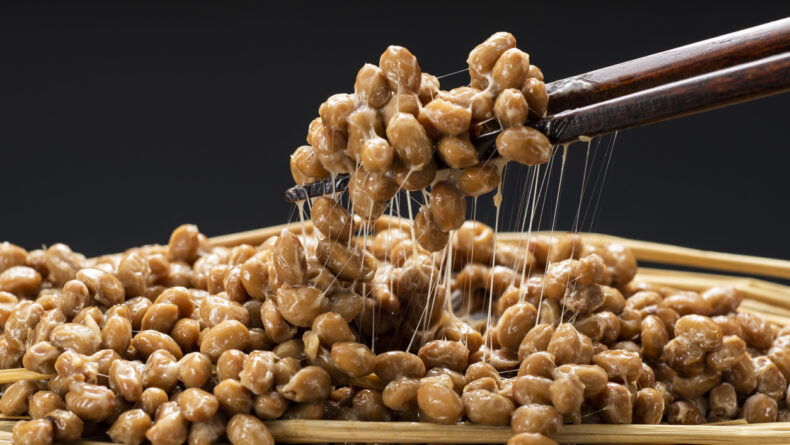

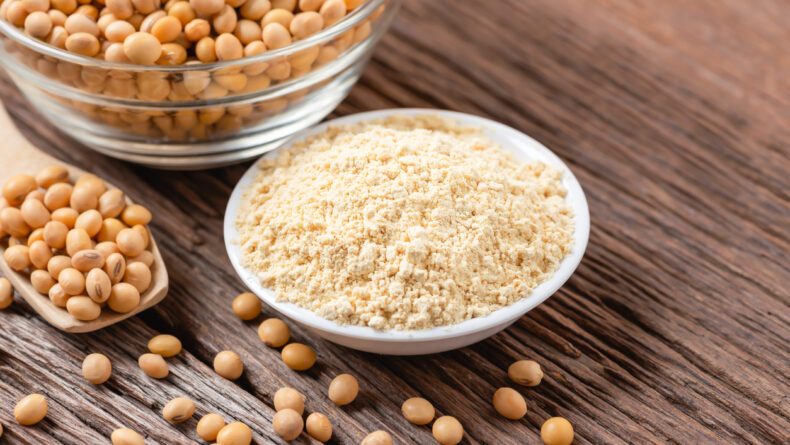
At what point do you cook the noodles?
I don’t see what’s “vegan” about the pesto. Surely pesto doesn’t contain animal substances, does it?